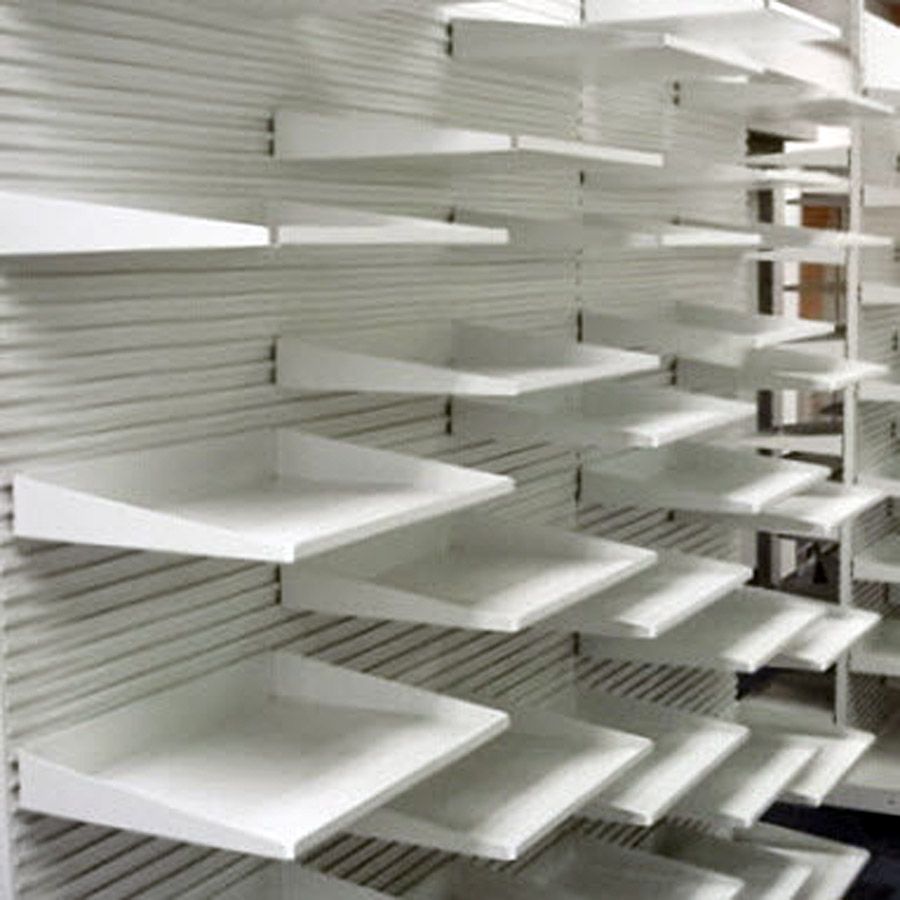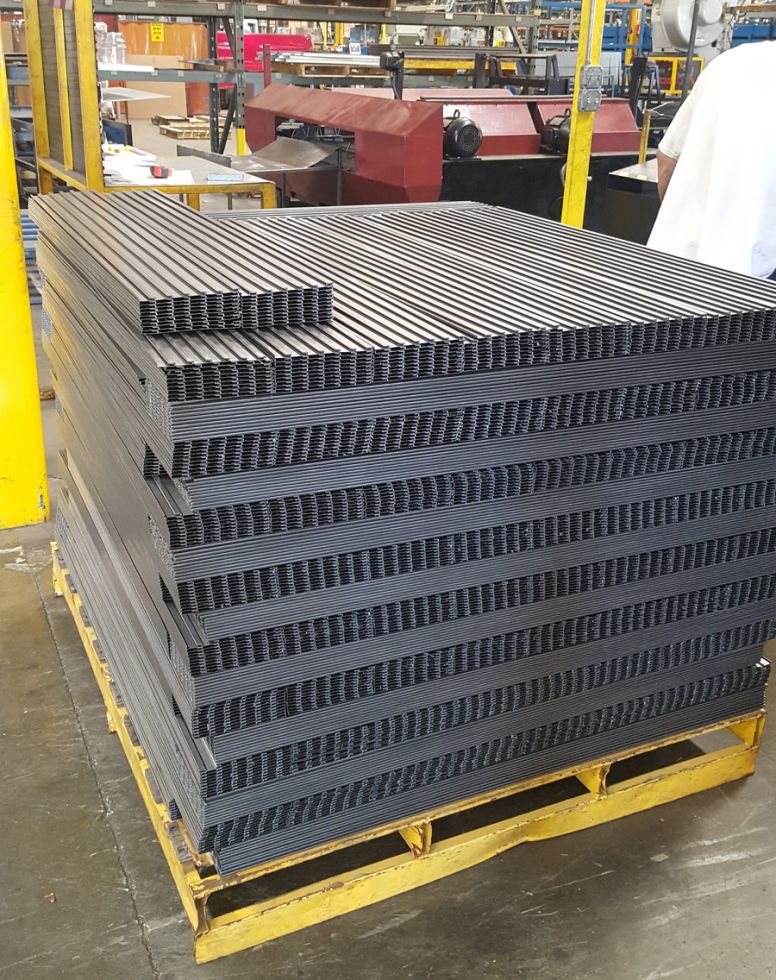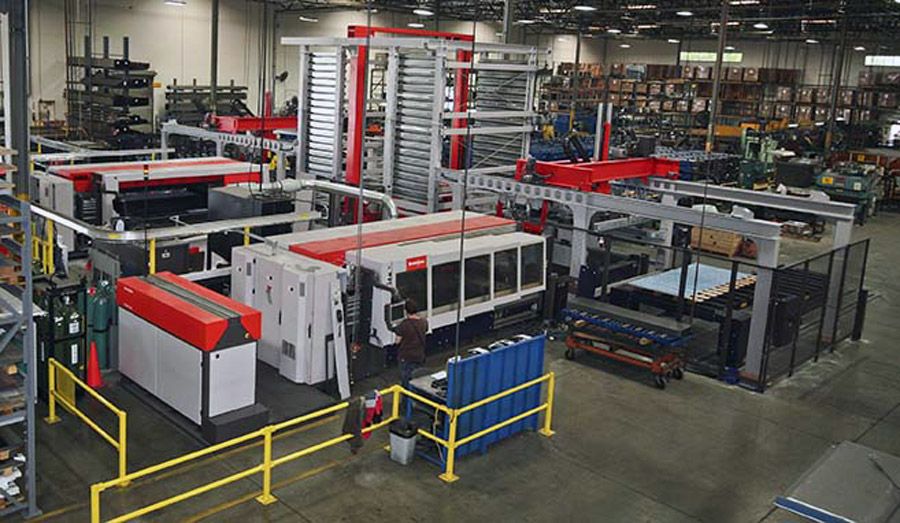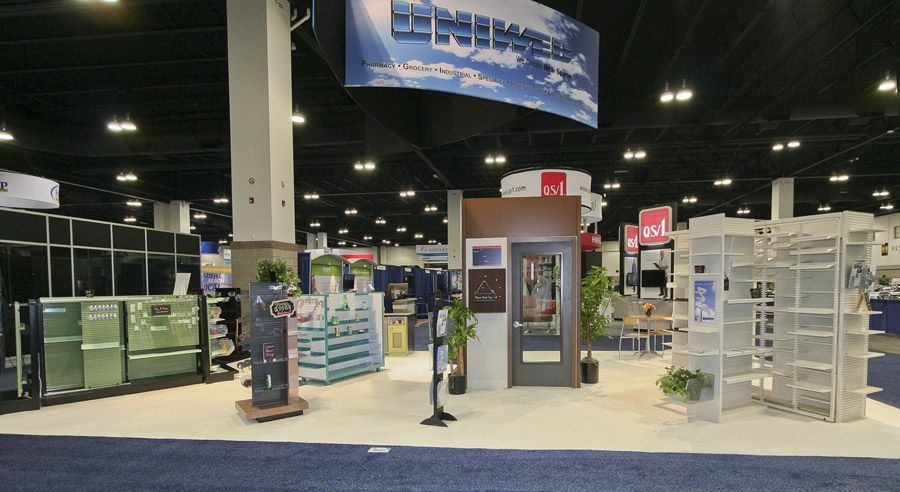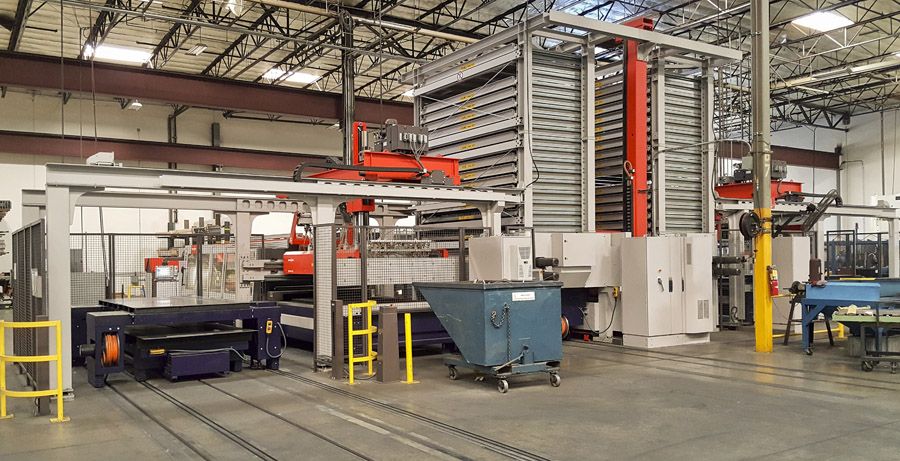
News TOWER OF POWER
How the biggest supplier of pharmacy merchandising display systems got even bigger with a pair of CO2 lasers and a sky-high material handling tower
Whether you’re in need of a tube of toothpaste or a bottle of pain reliever, any corner pharmacy will have you covered – and then some. Deciding what to toss into the shopping basket often comes down to brand loyalty, but it can also depend on the price of the product or its ingredients. There’s a lot to consider before tossing that product into the shopping basket.
Beyond price and other subjective factors, a planogram might also influence what a consumer chooses to buy. For anyone not immersed in the world of retail sales, a planogram is a diagram of shelf space that indicates where retailers will place a product to maximize sales. Because the allocation of space is sales-data driven, the arrangement of products can be subject to change as seasons come and go, as an assortment mix is updated, and as higher or lower product sales dictate. To say the least, a retail outlet, like the corner pharmacy, is constantly moving products around to increase sales.
To adhere to the planogram strategy, the shelving components themselves take a bit of a beating. When the product arrangement has to change, often the arrangement of the shelves must change with it. Therefore, the shelves need to be easy to move and sturdy. Boasting these characteristics, the Uniweb shelving solution has seen widespread adoption from retail giants like Costco, Albertsons Safeway and CVS.
Ideas come to life
Uniweb Inc. opened its doors in 1970 after its founder, Karl Weber, came up with the revolutionary shelving solution, which became the company’s mainstay product: the Uniweb slat wall. Like many great ideas, Weber’s slat wall started as nothing more than a sketch on a paper napkin. After turning his sketch into a tangible product, additional products, like the shelves and cabinets that lock into the slat wall system were also developed.
The slat wall, which is constructed of 24-gauge cold-rolled steel, serves as the backbone for a pharmacy’s and retailers’ ever-changing merchandising display needs. It’s best described as a display panel with long, horizontal channels or lips that accommodates the various accessories that will be affixed to a wall, such as shelving, gondolas, displays and hooks. Because the channels are only 1-in. apart, shelving can be placed as needed, no matter the height of the products.
Prior to the Uniweb invention, retailers used pegged or press-board type walls where they would attach hooks to hang their products. This, however, wasn’t sufficient. Products didn’t always hang securely and the press-board walls were prone to deterioration. Using steel inherently solved some of those issues.
Starting with cold-rolled steel, Uniweb roll forms material down to 6-in. strips through a unique roll former developed specifically for the slat wall design. In addition to producing the slat walls, Uniweb also produces more than 17,000 part numbers and custom work, fabricating accessories like the cabinets and shelving. On average, the company processes more than 7 million lbs. of steel coil annually to produce the walls and flat sheet stock to produce the accessories.
To fabricate the flat sheet stock, Uniweb relies on two Bystronic laser cutters and a stories-tall material handling system – the largest Bystronic material handling installation in North America.
Sky-high productivity
In the midst of Uniweb’s sprawling 186,000-sq.-ft. facility, the 48-shelf ByCell material handling tower nearly touches the ceiling. It’s flanked by two BySpeed 3015 4.4-kW CO2 lasers, which are typically cutting 24-gauge up to 1/2-in. mild steel sheet to process into the various accessories that integrate into the slat wall systems. Uniweb introduced its first laser in 2010, followed by the second laser in late 2012 and the tower a few months later in 2013.
Both of Uniweb’s laser cutters are directly connected to the tower through Bystronic’s Extended system, enabling communication to and from the equipment. With its 48 shelves, the ByCell is able to store massive amounts of raw material as well as cut parts. Because of the sophisticated connection between each laser and the tower, cut parts can be stored in the tower or immediately moved to secondary processes, like bending, welding and powder coating.
Before introducing the ByCell, Uniweb’s beam on-time efficiency was phenomenal compared to most, but lights-out laser cutting wasn’t a possibility. Since 2013, however, the sophistication of the equipment’s monitoring system has allowed for lights-out production in a way that allows the team at Uniweb to relax at home, knowing that the lasers are continually working without issues.
“It's allowed us that luxury of running overnight without having a single human being on-site,” says Brian Skvarca, vice president of manufacturing at Uniweb. “With the automation, we can maintain a lot of steel in our storage tower so we can have it readily available to turn things around quickly. From the time an order’s put on the floor, it's often cut and bent within two days.”
To date, Uniweb’s longest cut run time was 72 hours for both laser cutters non-stop. And that was with only one operator overseeing the lasers during his eight-hour shifts in addition to running unmanned throughout the night. Each morning during that three-day nonstop run, staff would come in to find the lasers still plugging away.
Before the introductions of the two laser cutters and material handling tower, operations at Uniweb were vastly different. Thanks to the lasers, Uniweb was able to produce products from start to finish in-house. And thanks to the ByCell, Uniweb was able to place an even greater commitment on inventory control.
“We inventory a vast variety of gauge material and because we have the ability to store it and have access to it immediately, unlike anyone else, we can just push a button and we have it on the laser,” says Skvarca. He continues saying that the first laser cutter itself was a game-changer, with its “biggest selling point of being able to bring more production in-house.”
Full control
“Everything was outsourced from China back then, and, therefore, it was very limited in terms of design,” Skvarca explains. “When we used to buy from China, you could get any color you wanted, as long as it was white. Lead times were also difficult, meaning we were looking at two or three months to get a large order. Another bonus is that now we’re also able to better manage quality control.”
The laser also inspired Uniweb to re-engineer its products, giving the company full control of product design and order turnover. These changes eventually ushered in a new type of relationship with the vendor that Uniweb had relied on in the past.
“After we increased our production capabilities with the lasers, we started supplying our previous vendor in China with all of its U.S. supply cabinets,” Skvarca says. “It was an interesting role reversal.”
Since then, Uniweb has continually added more technology to its manufacturing scope. Over the years, the face of manufacturing at Uniweb has totally changed.
“The most impressive part for people who are re-engaging with Uniweb is gaining a different perspective once they tour our facility,” he says. “The initial thought is that Uniweb is just a family-owned, small manufacturing company. So, what can they really do? Then when they see what we have now, that we’re running out of a massive facility, doing everything from laser cutting, roll forming and powder coating all the way through specialty packaging, their perspective changes dramatically.”
Skvarca says much of the change within the company comes down to the acquisition of the laser cutters.
“We would not be where we are today, in my opinion, without the lasers,” he says. “The decision to invest in laser technology inspired more change within the company. With their introduction, the manufacturing of the product dramatically changed and, therefore, the overall business changed.”
Room to move
Like the pharmacies and other retailers that rely on the slat wall solution, Uniweb also needs to have flexibility in its facility. To accommodate shifts in production, its equipment also needs to move. There are a few pieces of equipment that aren’t going to move, however. And the lasers are the best example of that. Everything else is soft plumbed so other than the key equipment, everything can be unplugged, unbolted and moved.“We developed a unique system in the shop where we move a lot of equipment on a frequent basis,” says Skvarca. “We adapt to the different product lines that we do, so we’ll move quite a bit of machinery every couple years. The layout and, therefore, the overall dynamic of the shop will change.”Uniweb prides itself on its ability to fill orders quickly and therefore, to be known as a just-in-time provider.“When you look at the big picture of a manufacturing process and you talk about a big roll out with a customer, the ability to react quickly has put us ahead of the competition,” says Cindy Davidson, president at Uniweb. “A lot of it is due to the way that we’ve integrated the lasers, the system that feeds them, and the off-loading and additional processes we’ve put in place as a result of the lasers.”Davidson also says that Uniweb’s operation philosophies in the front office have evolved since adopting the lasers and tower. The more modern the equipment and its controls are, the easier it is for the operators to make decisions in real time on the manufacturing floor.“Those decisions can start on the floor now instead of in the office environment,” she says. “We’ve empowered the individuals on the floor to do that, which has paid off greatly, particularly with reducing scrap. The utilization of material is one of the largest paybacks that you really don’t factor in because you’re pricing the material as if you don’t have the storage capacity that we do with the ByCell.”Skvarca builds on that concept saying, “There are a lot of ways to come up with new ideas, but we always like working around people with ideas. If someone on the shop floor has a great idea, we collaborate with them and make that idea work.” Bystronic Inc.Uniweb Inc.
As seen in Shop Floor Laser, October 2016 edition
